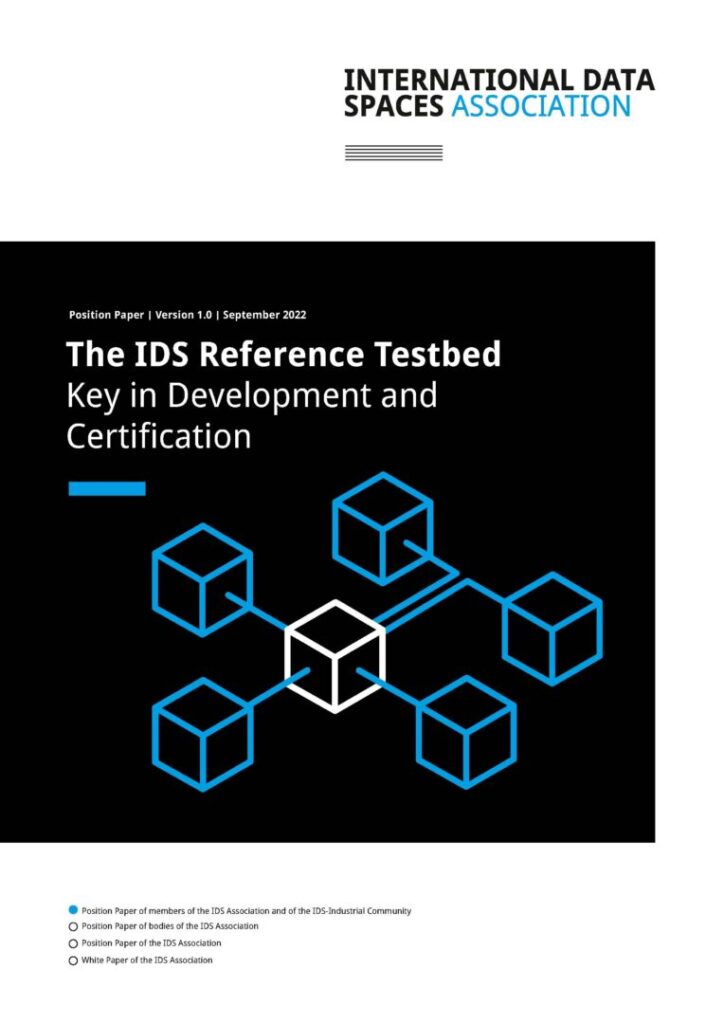The conclusion was published in a new position paper entitled ‘IDS Reference Testbed – key in development and certification’, which is available on the IDSA website for download.
Component and interoperability testing
The position paper explains how to use the IDS Reference Testbed for developing IDS components and preparing for IDS Certification. Before taking a closer look at this, let’s first get clear on what the testbed is in the first place. The IDS Reference Testbed is a piece of open-source software that consists of basic IDS components complying to the IDS specifications for establishing connections and communication. These components are the Certificate Authority (CA), the Dynamic Attribute Provisioning Service (DAPS), a Meta Data Broker and two Dataspace Connectors.
Moreover, an automated test suite is included for testing a data connector on criteria for interoperability and compliance to the IDS specifications. For testing on those certification criteria, a questionnaire tool will become available that guides through those aspects.
IDS Reference Testbed usage scenarios
What do we need the IDS Reference Testbed for? There are three usage scenarios: The IDS Reference testbed can be used to support the development of IDS components, the development of deployment scenarios, and the preparation for IDS certification.
Development of IDS components: The IDS Reference Testbed supports the development of IDS-components regarding the behavior of an individual component and the interoperability testing of a set of IDS components in an IDS data space.
Deployment scenarios: The IDS Reference Testbed is the starting point for developing scenarios for using the Data Space, including a minimal viable data space. It has basic functionality for data spaces, for developing data services and business workflows, and for analyzing the ecosystem of a data space.
IDS Certification: The certification of the IDS-components is executed using the IDS Reference Testbed. That sounds easy, but let’s have a look at it in detail.
IDS Reference Testbed for IDS Certification
For organizations to feel comfortable sharing data in an IDS data spaces, they must be able to trust their partners in data sharing. With an IDS certificate, an organization proves that a component and its operational environment meet specific security criteria agreed within the IDSA. While many requirements are based on best practices, their correct implementation needs to be ensured. Moreover, interoperability with other IDS components is crucial. Certification ensures that all components of an IDS ecosystem can interact with each other. In other words: it makes sure that IDS is fully interoperable.
The certification of IDS-components is executed using the IDS Reference Testbed, the same testbed which is publicly available for organizations to test their implementations. This ensures that the technical certification of the IDS components is transparent and that most issues can be resolved by the companies before the actual certification process starts.
Here is an overview of the activities of the IDS Reference Testbed user, provider, and maintainer in the usage scenarios for IDS component development, IDS deployment, and IDS certification.

Download the position paper ‘IDS Reference Testbed – key in development and certification’ here.





